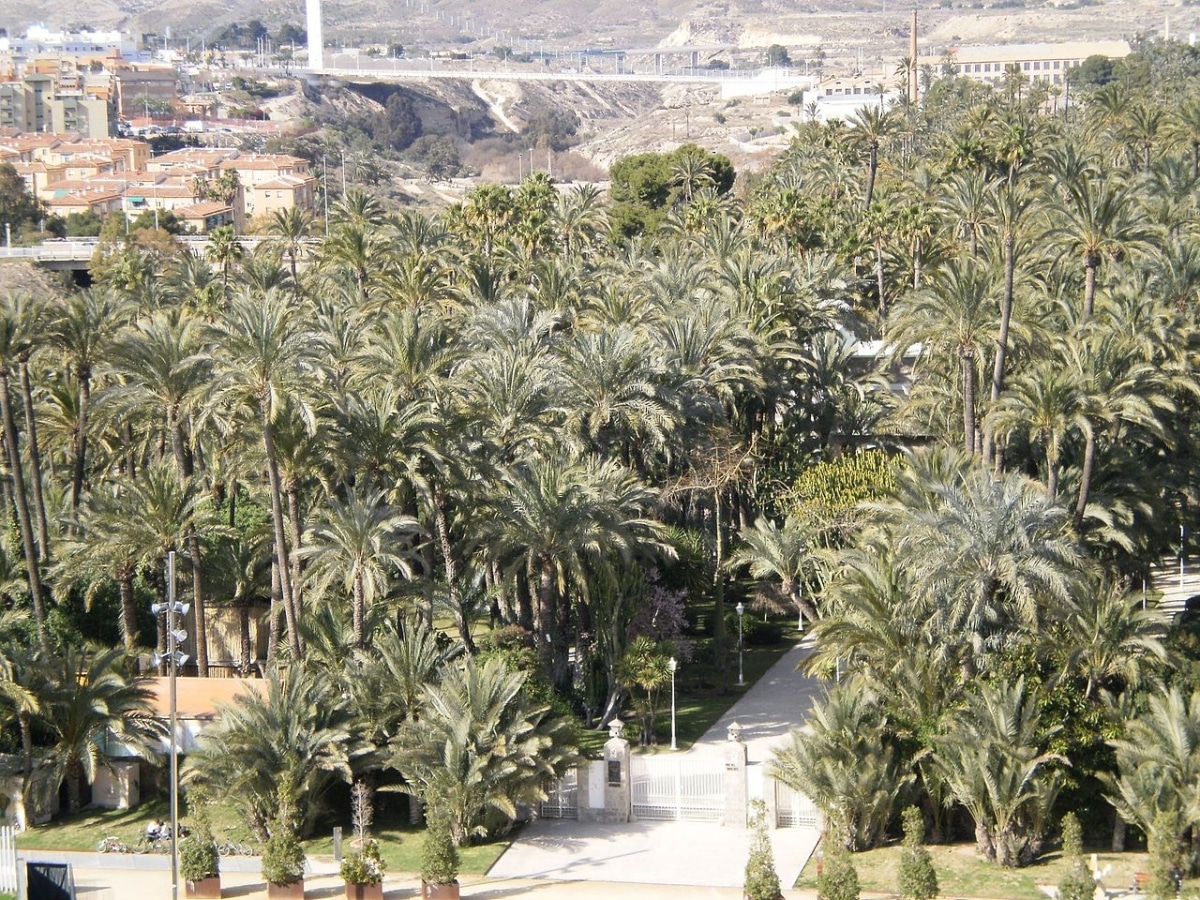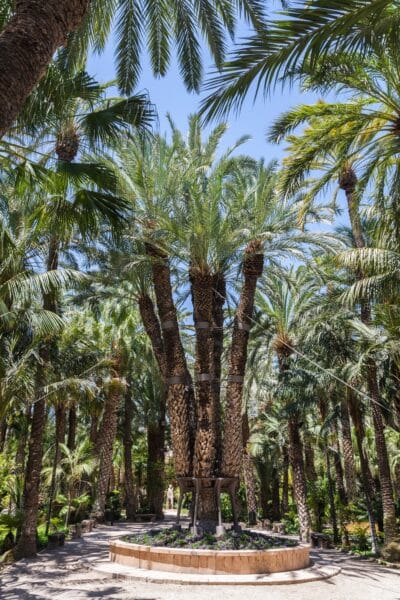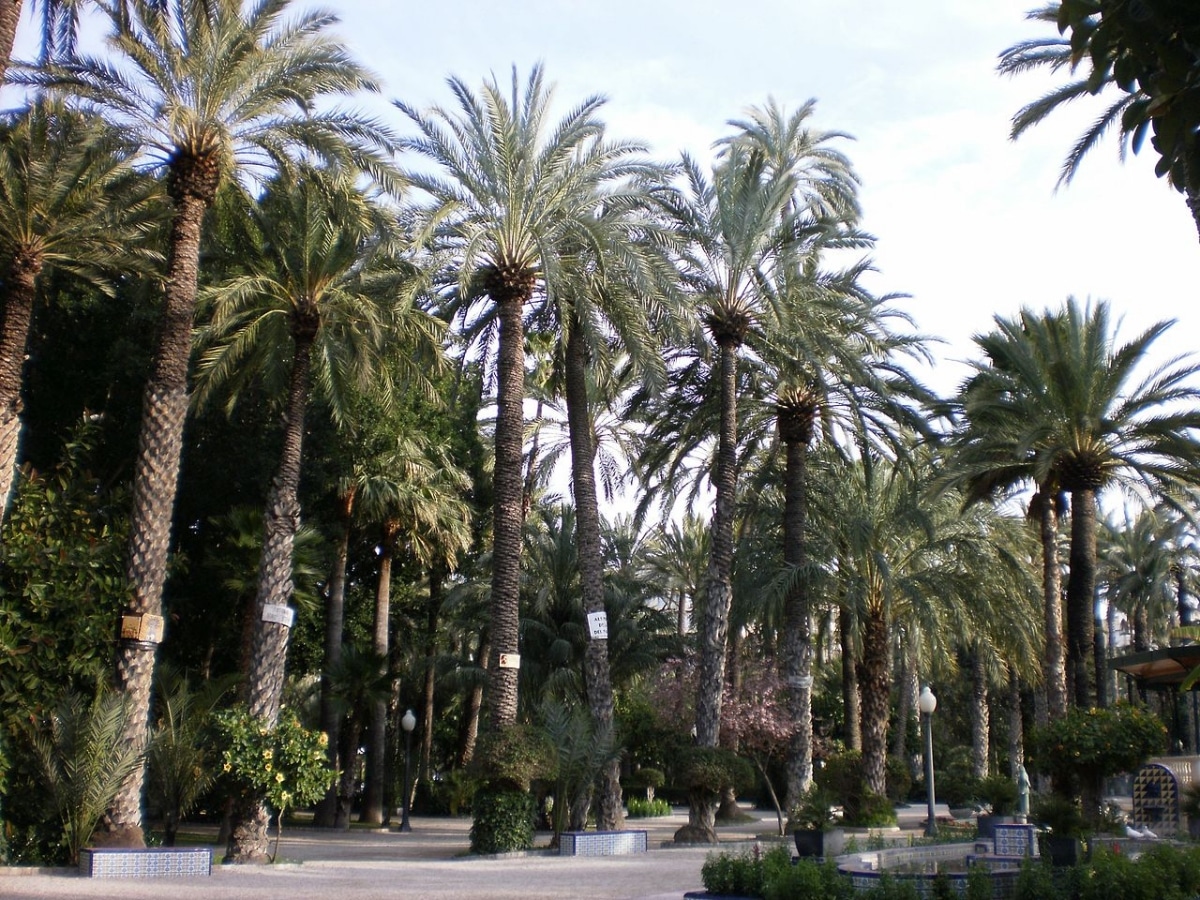
Image - Wikimedia / Diego Delso
There are gardens with palm trees, but what they did in the Valencian town of Elche is an artificial oasis that blends into the landscape. They did it so well, that for many it is the most beautiful palm grove in the world. Visiting it is almost like being in some of the most beautiful places in Africa, the continent where we can find the largest populations of date trees, which are the undisputed protagonists of this Valencian artificial oasis.
Enjoying a Mediterranean coastal climate, with very mild frosts in winter and temperatures that can reach 35ºC in summer, the Phoenix dactylifera they grow up happily in this part of Spain. In fact, they hardly need care, beyond a little pruning. Of course, we cannot forget about the harvesting of dates, fruits that are of great nutritional importance in this country.
Origin and history of the Palmeral de Elche

Image - Wikimedia / Superchilum
It is not known for sure when the date to the Iberian Peninsula, but it is believed that it could have arrived with the Phoenicians, or even earlier. In this sense, the historian José Aparicio Pérez testified that they were represented on the Iberian vessels of Elche. Before the Roman conquest, the palm grove already had an irrigation system, which was expanded. But it did not finish to improve completely until the Egyptians, experts in irrigation, lived in what is today the Valencian community for a while.
Later, Muslims would settle, who would plant more date trees. And so that they would not lack water, a network of ditches was also created, thus extending the irrigation system. During the Middle Ages a series of protection laws were passed for the palm grove. Jaume I was the first to keep this garden intact.
In the year 2000 was declared Heritage by Unesco.
Composition and number of date trees planted
Today there are fewer specimens of date trees than during the Muslim era, but still there are about 200-300 thousand specimens that occupy an area of 500 hectares. The palm grove is made up of different orchards, such as the Huerto del Chocolate, the Huerto de Abajo, and the most famous of all: the Priest's Garden.
Date palm trees are slow growing palms; in fact, it can take a decade to start developing a trunk. But they are capable of living about 300 years, if everything goes well. Those that make up the Palmeral are in good health thanks to the climate and their caretakers, although at times they have had to overcome very complicated challenges.
The Imperial Palm, the date of Empress Sissi

Image - Wikimedia / Diego Delso
It was the year 1894 when Empress Isabel de Baviera (Sissi) visited the palm grove. Upon seeing this specimen, which has 7 stems or arms that grow into a candelabrum, Sissi commented that it was worthy of an Empire.. From then on, this strange date palm would be renamed the Imperial Palm.
It is 12,70 meters high and is estimated to be 180 years old. Today it is visited by the people of the city, but also by curious tourists.
The red weevil in the Palmeral of Elche

Image - Flickr / Katja Schulz
If there is a pest that has done the most damage and is doing to palm trees, especially the Phoenix and, to be more specific, to P. canariensis and P. dactylifera, it is the Red weevil. This is a weevil; that is, a kind of beetle with a more elongated body, which in its larval stage it digs tunnels inside the stem of the plant while feeding on it.
The visible symptoms are:
- The central leaf of the plant, which serves as a guide, deviates from its growth point.
- Holes can be seen in the stem through which fibers can be extracted.
- In more advanced cases, the crown of leaves remains "hanging" from the stem, although leaves may drop that will be brown (dry).
How is it treated? Well, in 2005, which was when it was first detected in the Palmeral de Elche, the only thing that was known to work is treatment with Chlorpyrifos and Imidacloprid. These insecticides, without mixing (that is, one is used first, and the other the following month) are injected inside the stem.
If the specimen has not yet developed a stem and / or is healthy preventive measures are applied, either with nematodes, or with the insecticides mentioned above. It could even be useful to water it with a hose during the summer, directing it to the center of the palm tree, since this way it is possible to drown the larvae.
And even so, if it is not detected in time it is difficult to save it. Unfortunately, since the first was detected in the Palmeral de Elche, the number of date holders has decreased. Luckily, since 2017 more or less 60% of diseased palms have been saved.

Image - Wikimedia / Superchilum
All in all, we recommend a visit to the Palmeral de Elche, since we are convinced that you are going to enjoy it a lot.